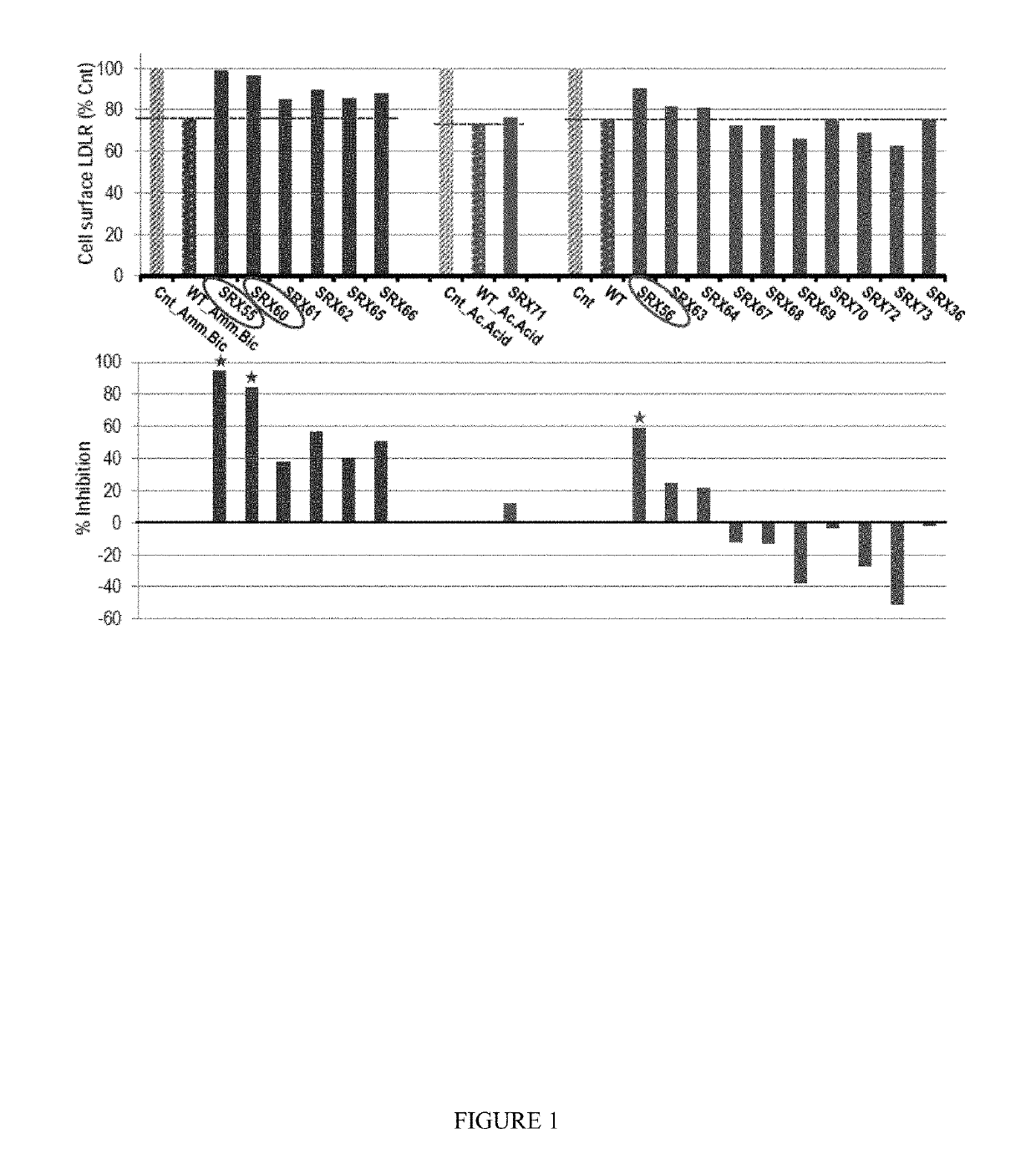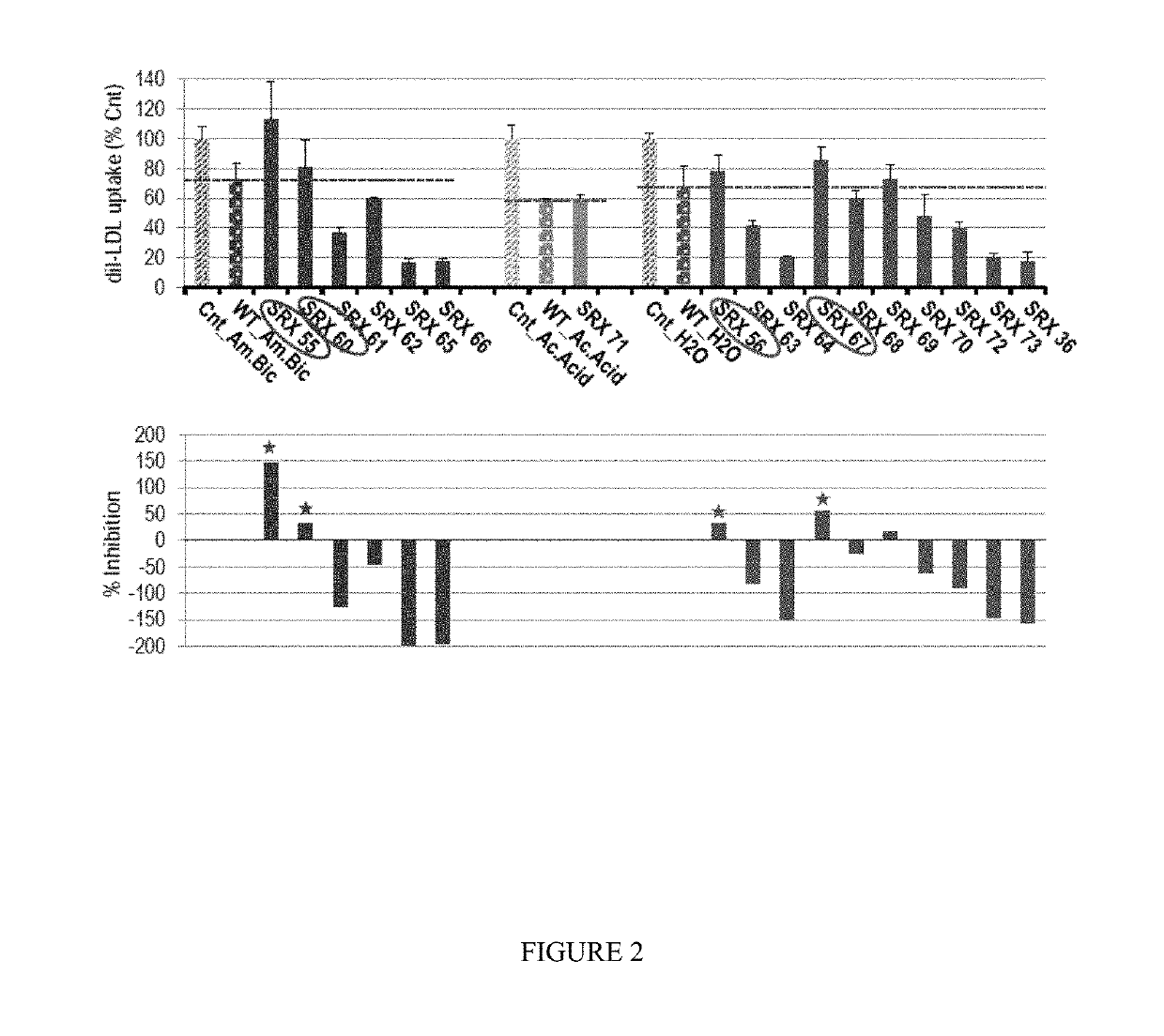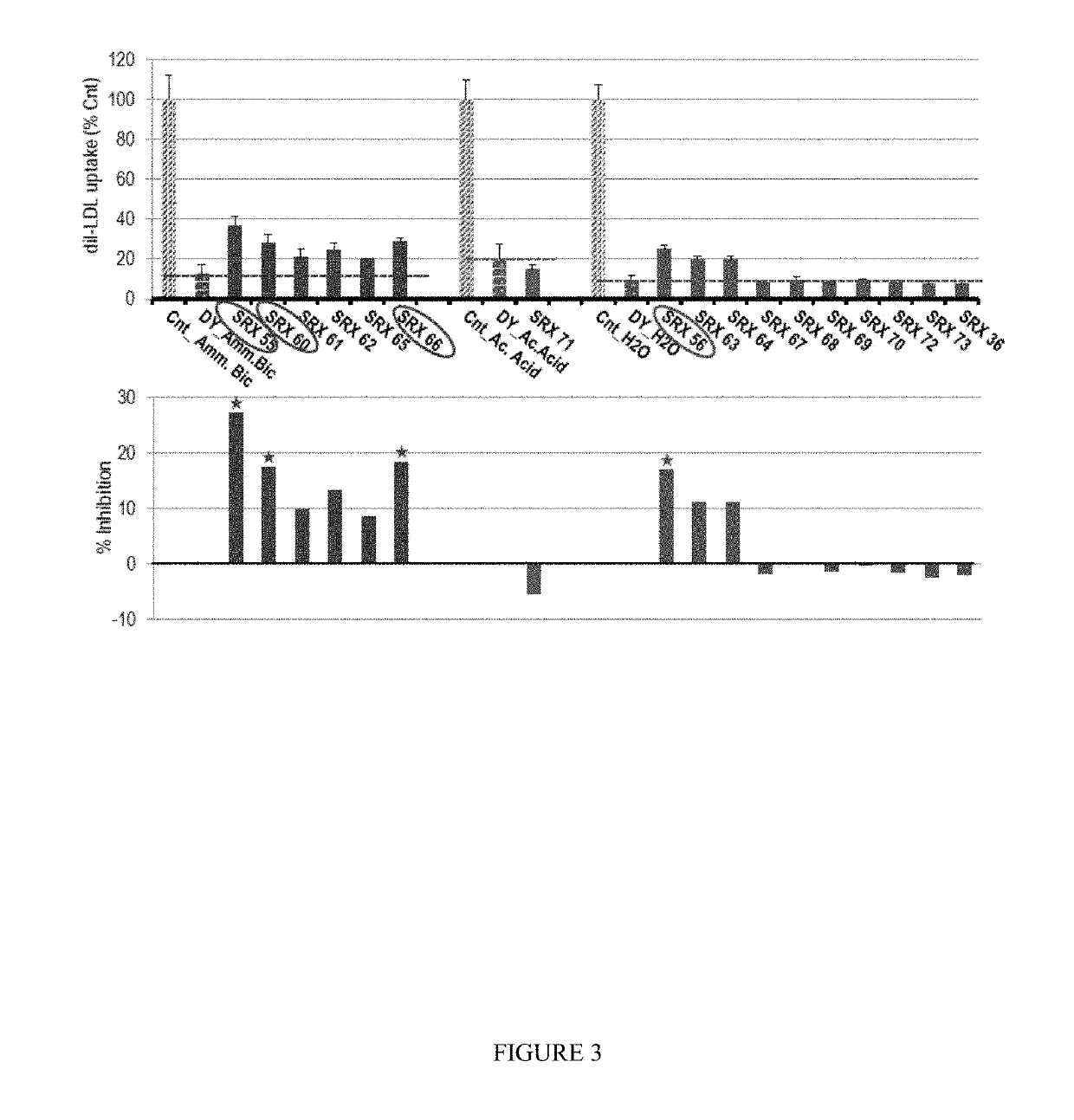Proprotein convertase subtilisin kexin type 9 (PCSK9) allosteric binding ligands to modulate serum low density lipoprotein (LDL) levels
a technology of allosteric binding and protease, applied in the field of hypercholesterolemia, can solve the problems of increased risk of heart disease and ldl-cholesterol levels
- Summary
- Abstract
- Description
- Claims
- Application Information
AI Technical Summary
Benefits of technology
Problems solved by technology
Method used
Image
Examples
example i
Cell Culture and Transfections
[0249]HepG2 / shPCSK9 or HuH7 / shPCSK9 cells (1) lacking endogenous PCSK9 were seeded at 1×105 cells / well in a 12 well microplate (Greiner Bio-One). These cells were then incubated for 4 h or overnight with 0.7 μg / ml of either V5-tagged PCSK9 or its gain-of-function PCSK9-D374Y pre-incubated, or not, for 4 h with each peptide at 50 μM (or less if needed for the most active peptides). The cells were then lysed in 1×RIPA buffer (150 mM NaCl, 50 mM Tris-HCl, pH 8.0), containing 1% Nonidet P-40, 0.5% sodium deoxycholate, 0.1% SDS supplemented with 1× complete protease inhibitor mixture (Roche Applied Science), and analyzed by Western blot.
example ii
Western Blot Analyses
[0250]Proteins in the cell lysates were resolved by 10% Tris-Glycine SDS-PAGE. The gels were blotted onto polyvinylidene difluoride (PVDF, Perkin Elmer Life Sciences) membranes (GE Healthcare), blocked for 1 h in TBS-T (50 mM Tris-HCl, pH 7.5, 150 mM NaCl, 0.1% Tween 20) containing 5% nonfat milk and immunoblotted with a homemade polyclonal human PCSK9 antibody (1:1000) (13), human LDLR antibody (1:1000, R&D Systems), beta-Actin (1:5000; Sigma) and monoclonal antibody (mAb) V5-HRP (1:5000; Sigma). Appropriate horseradish peroxidase-conjugated secondary antibodies (1:10000, Sigma) were used for detection with enhanced chemiluminescence using the ECL Plus kit (GE Healthcare). Quantitation of protein bands was obtained using Image J software.
example iii
FACS Analysis
[0251]HuH7 / shPCSK9 cells were incubated at 37° C. for 4 h as above with PCSK9 pre-incubated, or not, with each of the exemplified peptides used at 50 μM (or less if needed for the most active peptides). Benjannet et al., “Effects of the prosegment and pH on the activity of PCSK9: evidence for additional processing events”J Biol Chem. 285(52): 40965-40978 (2010). The cells were then washed 3× with solution A (calcium / magnesium-free Dulbecco's PBS (Invitrogen) containing 0.5% bovine serum albumin (Sigma) and 1 g / liter glucose)). The cells were then incubated for 10 min at room temperature with 1× Versene solution (Invitrogen) followed by the addition of 5 ml of solution A. The cells were then incubated for 40 min in solution A containing a human LDLR mAb-C7 (1:100; Santa Cruz Biotechnology). Following washes, the cells were then incubated for 20 min in solution A containing a secondary antibody (Alexa Fluor 647 donkey anti-mouse antibody; 1:250; Molecular Probes).
[0252]Fo...
PUM
| Property | Measurement | Unit |
|---|---|---|
| density | aaaaa | aaaaa |
| concentrations | aaaaa | aaaaa |
| concentrations | aaaaa | aaaaa |
Abstract
Description
Claims
Application Information
 Login to View More
Login to View More - R&D
- Intellectual Property
- Life Sciences
- Materials
- Tech Scout
- Unparalleled Data Quality
- Higher Quality Content
- 60% Fewer Hallucinations
Browse by: Latest US Patents, China's latest patents, Technical Efficacy Thesaurus, Application Domain, Technology Topic, Popular Technical Reports.
© 2025 PatSnap. All rights reserved.Legal|Privacy policy|Modern Slavery Act Transparency Statement|Sitemap|About US| Contact US: help@patsnap.com



